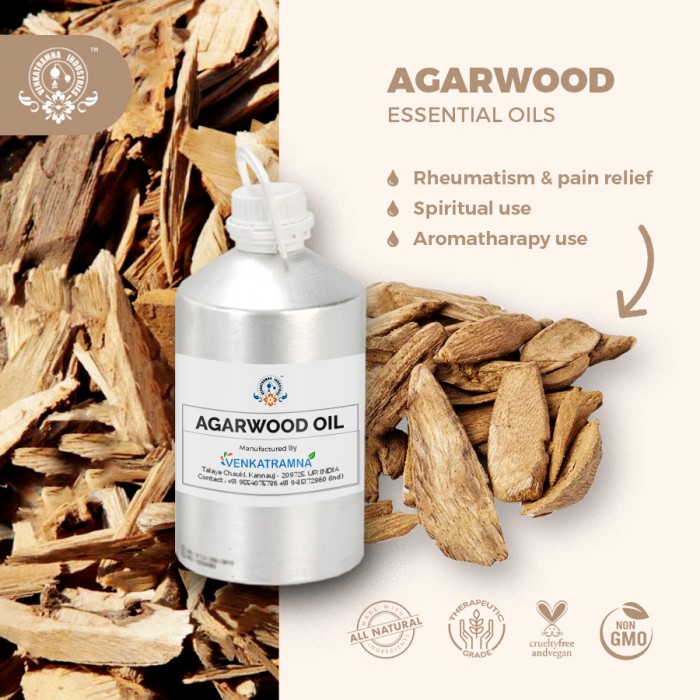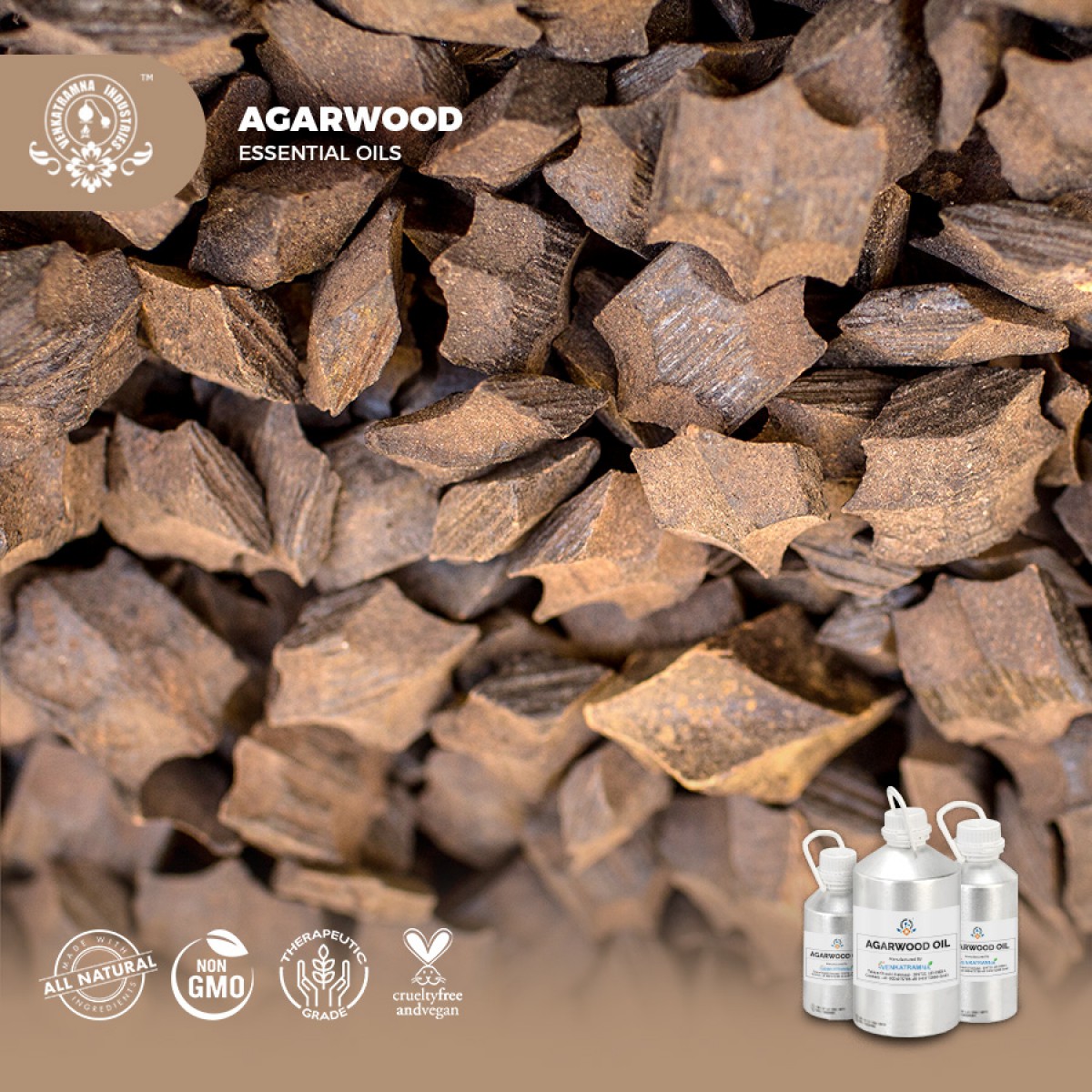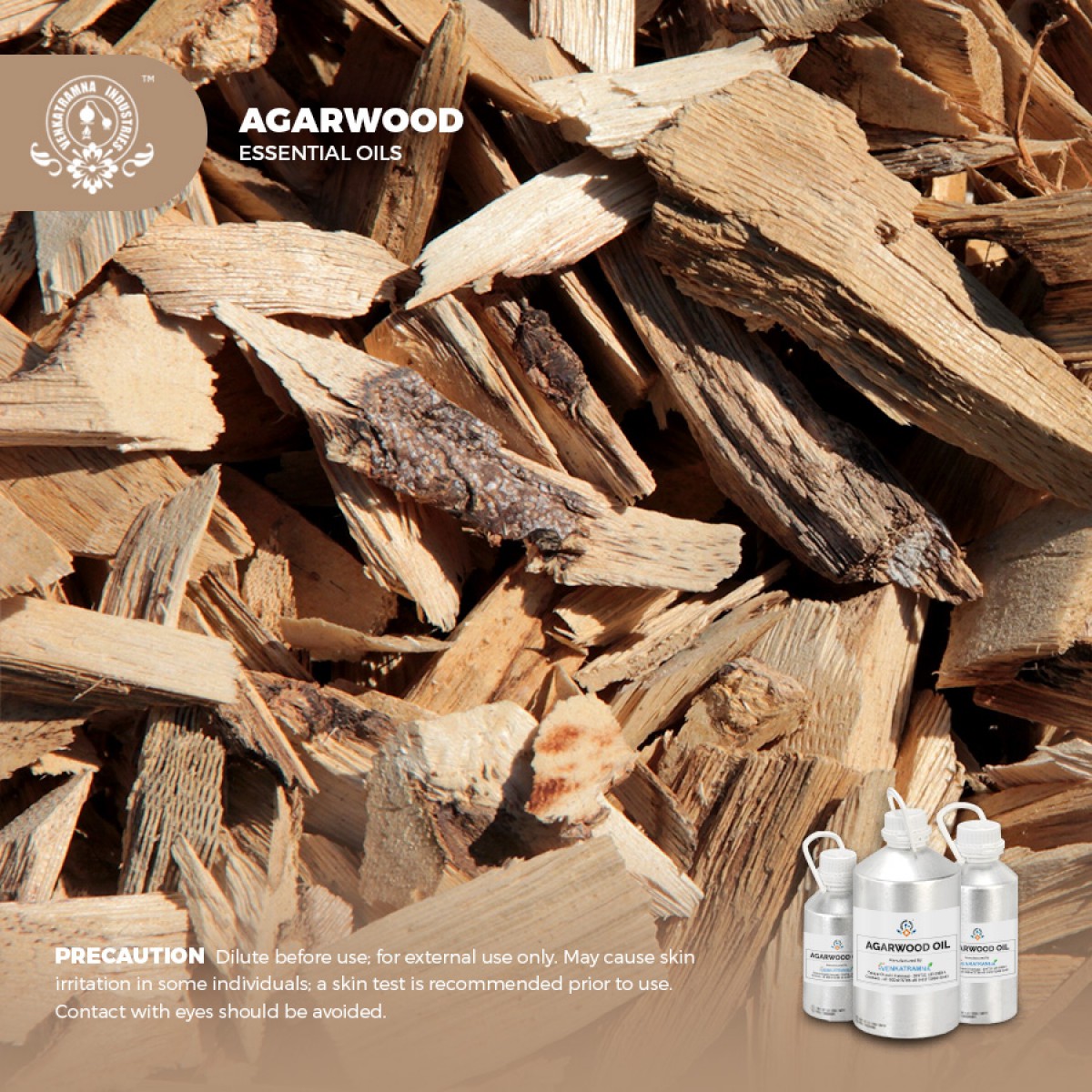Botanical Name : Aquilaria agallocha Common name: Agarwood, Oudh, Agalocha, Aloeswood, Eagl Read More
|
Botanical Name : |
Aquilaria agallocha |
|
Common name: |
Agarwood, Oudh, Agalocha, Aloeswood, Eaglewood, Gharuwood |
|
Plant family: |
Thymelaeceae |
|
Genus: |
Aquilaria |
|
Appearance/Color: |
Dark gold-amber, transparent, viscous liquid |
|
Odor: |
Oriental-woody and very soft fruity-floral notes aroma, with shades of smoky, amber incese, and honeyed tobacco, and sensual animalic notes resembling musk/castoreum. |
|
Blends With: |
All florals, woods and spice oils, Ambrette seed CO2, Buddhawood, Cardamom, Champaca Pink, Cistus, Cyprol, Hinoki, labdanum, Rose Otto, rose Moroco, White ginger, Sandalwood Mysore, Sandalwood Absolute, Saffron Absolute, tuberose, Pink lotus, Jasmine grand absolute, Jasmine samabc absolute, Pink Peppercorn, Potchouli. |
|
Origin |
India (Assam) |
Agarwood is a fragrant dark resinous wood used in incense, perfume, and small carvings. It is formed in the heartwood of aquilaria trees when they become infected with a type of mold.
The odor of agarwood is complex and pleasing, with few or no similar natural analogues. In the perfume state, the scent is mainly distinguished by a combination of "oriental-woody" and "very soft fruity-floral" notes. The incense smoke is also characterized by a "sweet-balsamic" note and "shades of vanilla and musk" and amber (not to be confused with ambergris). Agarwood and its essential oil gained great cultural and religious significance in ancient civilizations around the world, being described as a fragrant product as early as 1400 BCE in one of the world's oldest written texts – the Sanskrit Vedas from India.
The agarwood oil is extracted with the method known as hydro distillation. The oil extract is formed is the purest for of oil which 100% natural without containing any artificial chemical ingredient in it.
DISCLAIMER
The complete range of conditions or methods of use are beyond our control therefore we do not assume any responsibility and expressly disclaim any liability for any use of this product. Information contained herein is believed to be true and accurate however, all statements or suggestions are made without warranty, expressed or implied, regarding accuracy of the information, the hazards connected with the use of the material or the results to be obtained from the use thereof. Compliance with all applicable federal, state, and local laws and local regulations remains the responsibility of the user.
The FDA has not evaluated the statements on this website. No claims are made by Venkatramna Industries as to the medicinal value of any products from vriaroma.com or by us. The information presented here is for educating our customers about the traditional uses of essential oils and is not intended to diagnose, treat, cure, or prevent any disease. You are responsible for understanding the safe application of these products. If you have any questions, please call or email us for further information.
As per NAHA guidelines, it is not recommended the ingestion of essential oils. It is imperative to consult a medical practitioner before using Essential Oils for therapeutic purposes. Pregnant and nursing women and those taking prescription drugs are especially advised not to use this product without the medical advice of a physician. The oil should always be stored in an area that is inaccessible to children, especially those under the age of 7.
Agarwood is harvested in its various forms; oil, wood, powder, plant etc. It has been used for many health benefits and treatment of various types of illness. For thousands of years, agarwood has been used for medicinal purposes and continues to be used in Ayurvedic, Tibetan and traditional East Asian medicine.
The oil/bark extract is used in the treatment of Gastrointestinal problems. It has also a properties of antiinflammation so it is used inn the treatment of stomach and liver inflammation. Agarwood powder is an ingredient of Chavanprash which is a medicaments for general health and wellbeing. The oil is used in formulations as topical treatment for joint inflammation, sprains, pain relief, neuropathy and paralysis.
There has been a long history related with use of basic and regular oils for medicine purposes. Essentially, Agarwood oil is utilized generally in medications and incense. There are a few sorts of this notable sweet-smelling oil including Aquilaria agollocha, Malaccensis, Crassna and the sky is the limit from there.
· AROMATHERAPY USE
· SPIRITUAL USE
· THE MIND
· RHEUMATISM AND PAIN RELIEF
· SEX DRIVE
· DIURETIC FUNCTION
· DIGESTIVE FUNCTION
Today, the Agarwood Oil is most favored fixative basic oil in perfumery. It is utilized to make dependable and lavish aromas and premium attars around the globe.
|
S.No |
Key Constituents |
Strength (%) |
|
1 |
2-2-4-Methoxyphenyl-ethyl Chromone |
21.2-33 |
|
2 |
2-2-Phenylethyl Chromone |
16.1-23.6 |
|
3 |
Oxo-Agarospirol |
1.4-5.3 |
|
4 |
Guaia-1-10, 11-dien-15oic acid |
<4.7 |
|
5 |
6-Methoxy-2-2-4-Methoxyphenyl-ethyl chromone |
2.0-3.7 |
|
6 |
Guaia-1, 11-dien-15-al |
0.4-3.4 |
|
7 |
Selina-3,11-dien-9-ol |
0.4-2.8 |
|
8 |
Selina-3,11-dien-9-one |
0.2-2.1 |
· Hazardous No Data
· Contraindications Not Known
· Neurotoxicity Agarwood Oil vapors are sedative to mice
· Acute Toxicity Not known
· Skin corrosion/irritation: May be irritating to skin.
· Serious eye damage/irritation: May be irritating to eyes. Prompt rinsing and removal of the substance will avoid damage.
· Respiratory sensitization: Not applicable under normal use.
· Germ cell mutagenicity: Not specified
· Carcinogenicity: IARH: No component of this product present at levels greater than or equal to 0.1% is identified as probable, possible or confirmed human carcinogen by IARC. ACGIH: No component of this product present at levels greater than or equal to 0.1% is identified as probable, possible or confirmed human carcinogen by IARC.
· NTP: No component of this product present at levels greater than or equal to 0.1% is identified as probable, possible or confirmed human carcinogen by IARC.
· OSHA: No component of this product present at levels greater than or equal to 0.1% is identified as probable, possible or confirmed human carcinogen by IARC.
· Reproductive toxicity: Not specified
· STOT-single exposure: Not specified
· STOT-related exposure: Not specified
· Aspiration hazard: Not specified
· Information on the likely routes of exposure Skin/scalp contact.
· Symptoms related to the physical, chemical, and toxicological characteristics None known. Irritation of the eye if exposed. Redness of the skin if irritated.
· Delayed and immediate effects and also chronic effects from short-term and long-term exposure Exposure to vapors from this solvent in excess of the stated occupational exposure limit may result in adverse health effects such as mucous membrane and respiratory system irritation and adverse effects on kidney, liver, and central nervous system. Repeated or prolonged contact with the substance may cause removal of natural oil from the skin, resulting in non-allergic contact dermatitis and absorption through the skin. Splashes in the eyes may cause irritation and reversible damage.
· Interactive effects Not specified
· Where specific chemical data are not available Not specified
· Substances Not specified
· Substances verses ingredient information Not specified
· Info summery of Ecological Information Balance of data on substance, not determined.
· Eco toxicological properties of specific substances See each category below for specific substances
· Toxicity Acute fish toxicity: LC50 / 96 HOUR – No data available
· Toxicity to aquatic plants – No data available
· Toxicity to microorganisms – No data available Toxicity threshold – No data available
· Persistence and degradability Biodegradation is expected
· Bio-accumulative potential Bioaccumulation is unlikely
· Mobility in soil Unknown





 PS-Agarwood.pdf
PS-Agarwood.pdf





Vivek shrivastava - 05 May 2022
Really nice product